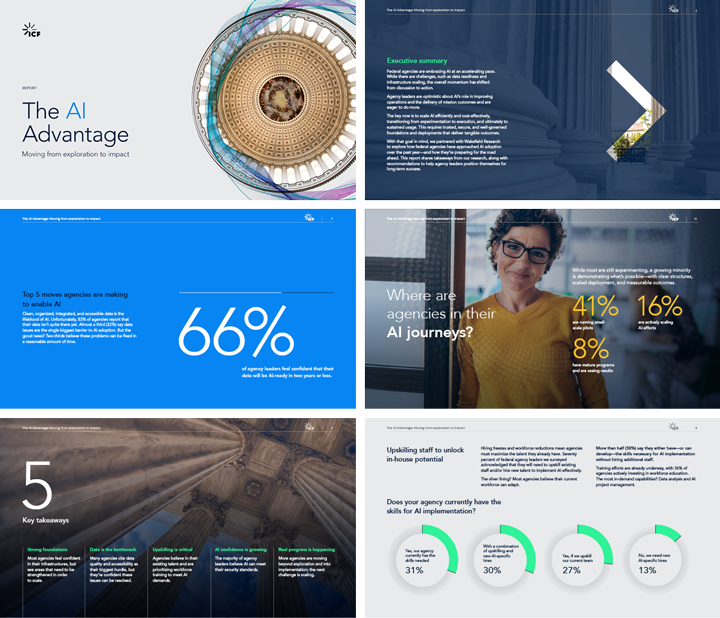
How federal agencies are integrating and innovating with AI capabilities
Artificial intelligence (AI) is no longer just a dream of science-fiction authors. It’s our reality—and our future. Today, AI and machine learning are innovating the way federal agencies handle overwhelming amounts of data.
In a recent webcast from Government Executive Media Group and Amazon Web Services, “Unlocking Artificial Intelligence in Government,” industry experts discussed how AI could enable federal agencies to accomplish more mission-critical work.
How do agencies bring AI innovations into programs across domains? How can they build a curriculum to increase the technical fluency around this exciting new field?
Building trust and consensus around AI
AI, despite its revolutionary potential, is no silver bullet. It can’t solve every organization’s problem. As a result, agencies face several key organizational challenges when adopting AI technology and bringing it closer to their users.
One challenge: trust. As you advance AI initiatives within an agency, users want to be sure they can trust the results or answers produced by a particular model. This is where upfront research becomes extremely important.
Another challenge: developing a consensus. AI adoption typically brings together multidisciplinary teams of statisticians, mathematicians, and AI experts—not to mention chief technology officers and chief executive offers focused on repeatability and governance.
It’s important to bring all parties together in a model of trust. Within this model, everyone should understand the business objective, how much confidence to have in the data, and how best to use that data to inform downstream decisions.
AI working alongside humans
Where do you draw that line between letting AI handle a task and knowing when a human needs to step in?
One way we’ve helped mitigate some of the potential challenges around AI innovation within the federal government is through call center operations at the U.S. Department of Health and Human Services.
Normally, social workers answer the phones. However, conversational AI technology allows them to focus on high-value activities and expedite the department’s ability to respond to citizens faster by handling simple calls that are easy to resolve, such as inquiries about locating a particular resource.
But there’s a balance at play, given the delicate nature of social work. With this particular AI technology, humans must remain in the loop. At any point in a particular call requiring more specialized attention, a social worker must have the ability to intercept and take over the conversation.
For a deep dive into how agencies are using AI to transform operations and drive mission success, read our intelligent automation white paper.
4 guidelines for AI integration
Here are four guidelines to remember as you integrate AI into your agency.
- Make time to experiment. Instead of solely focusing on the task at hand, step back and create sandbox environments for people to pressure test new ideas and, most importantly, fail forward.
- Think down the road. What does the future look like for your agency? How will new technology coming out of Silicon Valley advance your agency’s data preparation, curation, and cataloging?
-
Don’t lose sight of cybersecurity. When adopting AI technology, it’s essential to do so in the context of concerns about cybersecurity, data privacy, and digital ethics. Bring these concerns forward early in the process, so they don’t trap you downstream.
-
Empower your data leaders. There are always places in the AI lifecycle for people—especially data-minded ones. Embrace your organization’s data leaders, and empower them to use data to test assumptions and challenge ideas.
With these ideas in mind, your agency will be better primed for success as the federal government—and the entire world—heads into the bold new frontier of AI.
